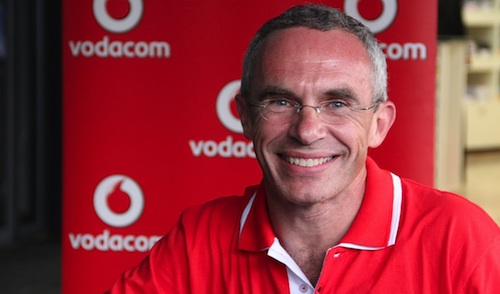
The only way universal access to broadband services is going to become a reality in SA and elsewhere in the world is through a combination of regulation of pricing and spectrum allocation and sensible investment from both government and industry players.
That’s a key finding of a new report commissioned by Vodafone and the World Wide Web Foundation and presented by Vodafone subsidiary Vodacom at the University of the Witwatersrand on Wednesday evening.
The report, Making Broadband Accessible for All, suggests regulators and industry need to recognise that a “fixation on fibre” isn’t necessarily the most effective way to get the developing world online, and that a combination of fixed-line and mobile services is necessary if access for all is to become a reality.
According to the report, to drive socio-economic development and growth, access to broadband is now a necessity. According to Vodacom Group CEO Pieter Uys, the purpose of the report is to “encourage debate and discussion around achieving accessibility for all” rather than to serve as an endorsement of Vodacom’s data services.
Uys says that Africa enjoys only 10% Internet penetration. He says in SA data is growing much faster than voice. “Between 2010 and 2015 we expect a compound annual growth rate of 100% in data usage.”
The report suggests that in the developed world broadband is becoming synonymous with fibre but that mobile connectivity options are most suited to developing markets such as those in Africa, particularly where universal access remains far from being a reality.
According to the report, many developing markets have failed to allocate available spectrum in a practical manner. In Cameroon, for instance, the military controls more than 80% of available spectrum, grossly limiting mobile providers’ ability to create widespread coverage for consumers.
“Take the digital dividend: to divide it between four or five players is not going to result in a great deal of extra coverage,” says Uys of the spectrum that will be freed up when television broadcasters moving from analogue to digital. “Perhaps we need to collaborate rather than compete, at least at first, to ensure extensive coverage.”
Uys says regulation needs to both support access for all and find ways to encourage competition between operators. He says cheaper smartphones are going to change the digital landscape. “Soon enough, most people will have a smartphone because what we consider high-level today will be entry-level in a few years.”
Data services need to be affordable, as devices are only one part of the problem, he adds. The telecommunications industry and regulators need to work together to ensure national coverage.
Winfred Mfuh, associate fellow at the University of Warwick Business School and lecturer at London’s Regent’s Business School is one of the researchers behind the report. He says the report is necessarily general because of the speed with which technology changes.
The report covers topics such as mobile Internet usage and demand in Kenya, the potential of mobile Web content in East Africa, spectrum policy and competition in mobile services, rethinking mobile regulation for the data age, and building next-generation broadband networks in emerging markets.
Mfuh says that the lack of fixed-line infrastructure in many African countries is to thank for the explosion of mobile connectivity. He adds that a recent study in Afghanistan and Cameroon concluded that the integration of mobile telephony services into business processes enhances micro-business performance by 39%.
The “real price” of mobile services in the developing world is “cushioned by the structure of networks”, he says. Low-cost users still generate revenue with the calls they receive, so it is in operators’ interest to increase penetration. Because developed nations don’t have to think this way, he says emerging markets “cannot simply copy the developed world’s models”.
Because networks pay each other to field calls across each other’s networks, subsidising low-spend users who make few to no calls still generates revenue for operators and thus stimulates them to drive consumer uptake. However, Mfuh points out that this isn’t the case with mobile data where the data user carries the entire cost.
He says this could impair the roll-out of data services because operators are going to find it increasingly difficult to continue to fund infrastructure development in the face of diminishing voice revenues and increasing data traffic on networks.
Mfuh says that according to the report, 85% of the cost of a next-generation fibre network is in the last 100m of the access network. As a result, the best mix of fibre and wireless broadband depends on context and geography.
The report is the twelfth in a series that began in 2005. The entire report can be viewed here. — Craig Wilson, TechCentral
- Subscribe to our free daily newsletter
- Follow us on Twitter or on Facebook

